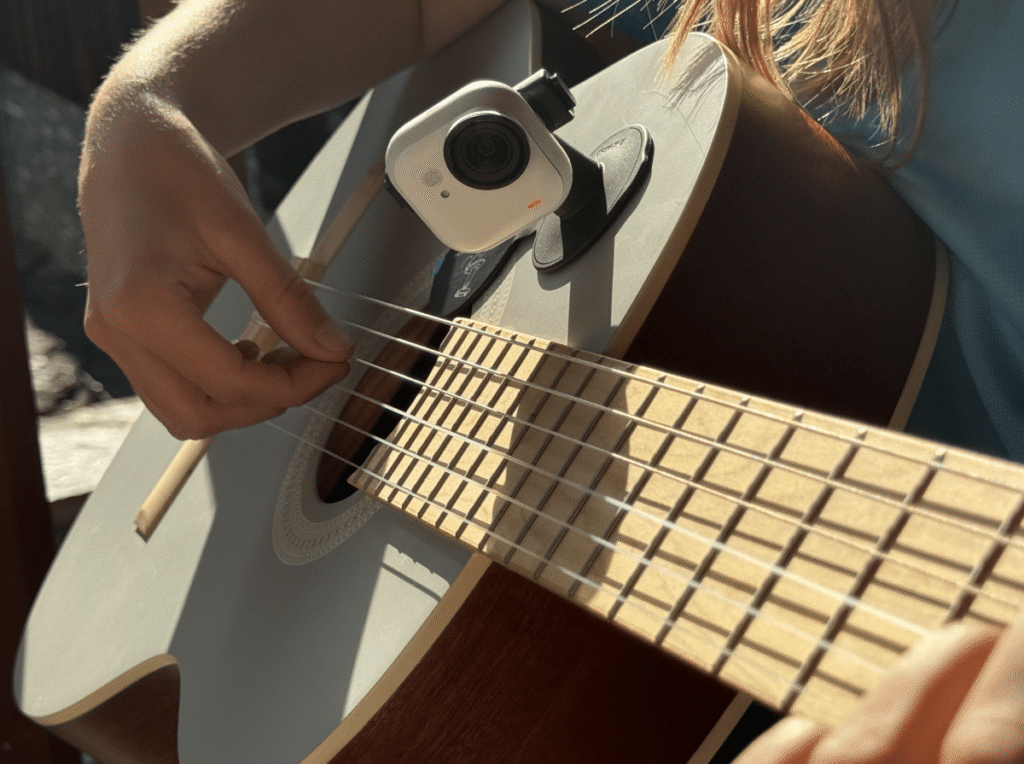
Insta360 Go Ultra Hands-On Review: Tiny Camera With Big Personality

Key Takeaways:
- The new Go Ultra by Insta360 is a major upgrade from the Go 3 and Go 3S: It addresses the main issues of earlier models with microSD storage, a larger sensor, sharper 4K video, and longer battery life.
- Small size, real flexibility: Weighing only 53g, the Go Ultra is ideal for athletes, travelers, or anyone who wants lightweight gear without sacrificing creative shooting options.
- Creator Bundle designed for lifestyle use: At $499, the kit includes smart accessories like a tilt-ready magnet pendant, pivot stand, and tripod with hidden SD storage, making it perfect for vloggers and casual creators.
- Competition is intensifying: As DJI prepares to launch the Osmo Nano, the Go Ultra may soon encounter its first genuine competitor in the ultra-compact, wearable camera market.
Insta360 has introduced a small but powerful new addition to its lineup, and it’s designed to be your pocket-sized sidekick.
The Go Ultra features a larger 1/1.28-inch sensor and a 5 nm AI chip, delivering crisp 4K video at 60 fps.
It weighs just 53 grams – lighter than most smartwatches – yet claims up to 200 minutes of shooting with the Action Pod.
Insta360 also teases fast charging, hands-free POV with the magnet pendant, and creative modes like Pure Video night shots and TimeLapse star trails.
Sounds dreamy, right? Let’s see if it actually delivers.
My own Experience: Go Ultra vs. Go 3
When I first unboxed the Insta360 Go Ultra, it brought back memories of testing the Go 3 a while ago.

That small gadget impressed me with its portability, but its limitations also frustrated me. Short battery life, limited internal storage, and some quirks in low light meant I couldn’t always depend on it as a daily camera.
The Go Ultra seems like the perfect fix for those complaints. I immediately noticed how the new model looked familiar but exuded a different confidence. It feels like Insta360 finally figured out how to make this series more than just a fun toy.
And yes, it’s still incredibly small. I clipped it to my shirt and barely noticed it. The weight is just 53 grams, which is amazing when you realize this tiny device records sharp 4K at 60 fps.

It’s worth noting there was also a Go 3S released between these models. I skipped that one, mostly because it didn’t bring major improvements that justified a closer look.
The Ultra, though, is different. It finally feels like a big step forward for the series.
The Creator Bundle Experience
I used the Creator Bundle for testing, which sells for $499. That price is comparable to a GoPro Hero or DJI Action, but what you’re getting here is a different kind of tool.

Inside the box, there’s the camera itself (with the lens guard already installed), a quick-release safety cord, a magnetic easy clip, a magnetic pendant, a quick-release mount, a mini 2-in-1 tripod 2.0, and a pivot stand.
These may seem like small extras, but I used almost all of them. The magnet pendant, for example, now allows you to tilt the camera.
For lifestyle bloggers, that’s a game-changer. You can wear it around your neck and adjust the angle so the shot doesn’t awkwardly point at your chin. It makes casual POV footage actually usable without fiddling around.

The pivot stand has become my favorite. I set it up while playing guitar, aiming the Go Ultra directly at my fretboard. The angle provided a close-up of my fingers on the strings—something I wouldn’t usually set up with a bulkier camera. It demonstrated how versatile the Ultra can be for creative projects.

And then there’s the new mini 2-in-1 tripod. Small enough to throw in a jacket pocket, but the clever part is that it has a hidden case for spare SD cards.

If you run out of memory during a shoot, just open the tripod, and your backups are right there. It’s such a simple thing, but small details like that matter when filming outside.
Storage and Recording Freedom
Speaking of memory, this is a significant upgrade from both Go 3 and Go 3S.
The Ultra finally abandons fixed internal storage and records directly to a microSD card. That means no more juggling files mid-shoot just because you’ve filled up 64 GB.
It also means I can carry a few extra cards, switch them out quickly, and keep recording without concern. For anyone planning to vlog a whole day or record long sessions – like a concert, a ride, or a hike – that alone makes the upgrade worth it.
Image Quality (That Surprised Me)
The Go Ultra’s 1/1.28-inch sensor sounded like a solid upgrade on paper. In practice, it impressed me more than I expected. The footage is sharper, colors are richer, and low-light performance is much better than the Go 3.

I filmed during the day in bright daylight, in soft twilight with low light, in warm golden hour light, and also at night with just a lamp on.
The Go 3 used to give me grainy video in the low light scenarios. The Ultra, on the other hand, produced clear shots with surprisingly little noise. The PureVideo mode actually feels useful now instead of gimmicky.

Slow motion is another area where the Go Ultra excels. It can shoot at 1080p and 240 fps, which is really impressive. I can’t wait to try it in the winter – I’m sure it will capture my snowboarding tricks in great detail.
Battery Life: Better, but Still Tricky
Battery life was a sore point with the Go 3. I often found myself charging it after about 40 minutes of shooting. The Ultra improves on that, but it’s not infinite.
Standalone, I got about 45 minutes at 4K/30 fps before it gave up.
I lasted nearly two and a half hours with the Action Pod attached. That’s more than enough for short trips or daily vlogging. Still, since the battery isn’t swappable, you’ll need to plan around charging if you’re doing full-day shoots.
Any Downsides?
It wouldn’t be a fair review without pointing out the quirks.
First, the lens guard. It’s domed, and while it looks sleek, it also seems like a scratch magnet if you drop it on gravel or concrete. I’m extra careful with it, but I can see this being an issue for adventure sports enthusiasts.
Unlike the Insta360 X5, the lens here isn’t easily replaceable, so scratches are something you’ll want to avoid at all costs.

Second, waterproofing. The pod itself isn’t rugged—only splash-proof. You’ll need an extra case for proper underwater use. Since many people want to take these things swimming or surfing, that feels like a missed opportunity.
While filming myself playing guitar, I also tested the audio, and it handled the sound well. For casual vlogging, the built-in mics do the job sufficiently.
But if you’re aiming for serious music recording or polished production, you should definitely connect an external mic. It’s not really a downside, but something to keep in mind if audio quality matters as much as video.
Price vs. Value
At $499 for the Creator Bundle, the Go Ultra isn’t inexpensive. However, its versatility and appeal give it a unique character that helps it stand out in the competitive action-cam market.
For me, the accessories really sealed the deal. The tilt pendant, the pivot stand, the SD-ready tripod – they all made the Ultra feel more like a creator’s kit than just a camera. If you’re a musician, a vlogger, or someone who enjoys capturing daily life without lugging around a brick, that $499 starts to seem like a good investment.
DJI is also preparing to release the Osmo Nano, a magnetic mini action cam clearly targeted at the same audience.

If its rumored features and pricing hold up, the Go Ultra may soon have its first true rival in the tiny-but-mighty category.
Who the Go Ultra Is Really For
After testing the Insta360 Go Ultra, I see it as more than a novelty – it’s a daily camera.
The jump from both Go 3 and Go 3S is real: microSD storage, sharper 4K, better low light, and longer battery life.
But what hooked me were the small details, like tilting the pendant for natural POVs or stashing spare cards in the tripod. The Creator Bundle screams lifestyle bloggers and content creators, but athletes will love how light it is when every gram counts.
It’s not perfect, yet it’s the first Go camera that made me want to keep filming.

Anya Zhukova is an in-house tech and crypto writer at Techreport with 10 years of hands-on experience covering cybersecurity, consumer tech, digital privacy, and blockchain. She’s known for turning complex topics into clear, useful advice that regular people can actually understand and use. Her work has been featured in top-tier digital publications including MakeUseOf, Online Tech Tips, Help Desk Geek, Switching to Mac, and Make Tech Easier. Read more
Whether she’s writing about the latest privacy tools or reviewing a new laptop, her goal is always the same: help readers feel confident and in control of the tech they use every day. Anya holds a BA in English Philology and Translation from Tula State Pedagogical University and also studied Mass Media and Journalism at Minnesota State University, Mankato. That mix of language, media, and tech has given her a unique lens to look at how technology shapes our daily lives. Over the years, she’s also taken courses and done research in data privacy, digital security, and ethical writing – skills she uses when tackling sensitive topics like PC hardware, system vulnerabilities, and crypto security. Anya worked directly with brands like Framework, Insta360, Redmagic, Inmotion, Secretlab, Kodak, and Anker, reviewing their products in real-life scenarios.
Her testing process involves real-world use cases – whether it’s stress-testing laptops for creative workloads, reviewing the battery performance of mobile gaming phones, or evaluating the long-term ergonomics of furniture designed for hybrid workspaces. In the world of crypto, Anya covers everything from beginner guides to deep dives into hardware wallets, DeFi protocols, and Web3 tools. She helps readers understand how to use multisig wallets, keep their assets safe, and choose the right platforms for their needs. Her writing often touches on financial freedom and privacy – two things she strongly believes should be in everyone’s hands.
Outside of writing, Anya contributes to editorial style guides focused on privacy and inclusivity, and she mentors newer tech writers on how to build subject matter expertise and write responsibly.
She sticks to high editorial standards, only recommends products she’s personally tested, and always aims to give readers the full picture. You can find her on LinkedIn, where she shares more about her work and projects.
Key Areas of Expertise: Consumer Tech (laptops, phones, wearables, etc.) Cybersecurity and Digital Privacy PC/PC Hardware Blockchain, Crypto Wallets, and DeFi In-Depth Product Reviews and Buying Guides Whether she’s reviewing a new wallet or benchmarking a PC build, Anya brings curiosity, care, and a strong sense of responsibility to everything she writes. Her mission? To make the digital world a little easier – and safer – for everyone. Read less
The Tech Report editorial policy is centered on providing helpful, accurate content that offers real value to our readers. We only work with experienced writers who have specific knowledge in the topics they cover, including latest developments in technology, online privacy, cryptocurrencies, software, and more. Our editorial policy ensures that each topic is researched and curated by our in-house editors. We maintain rigorous journalistic standards, and every article is 100% written by real authors.

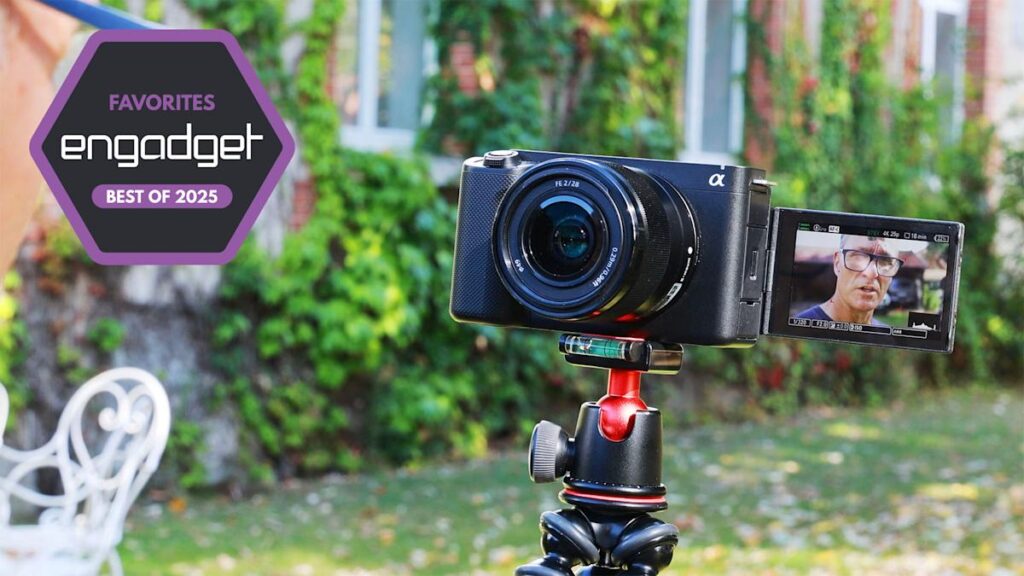

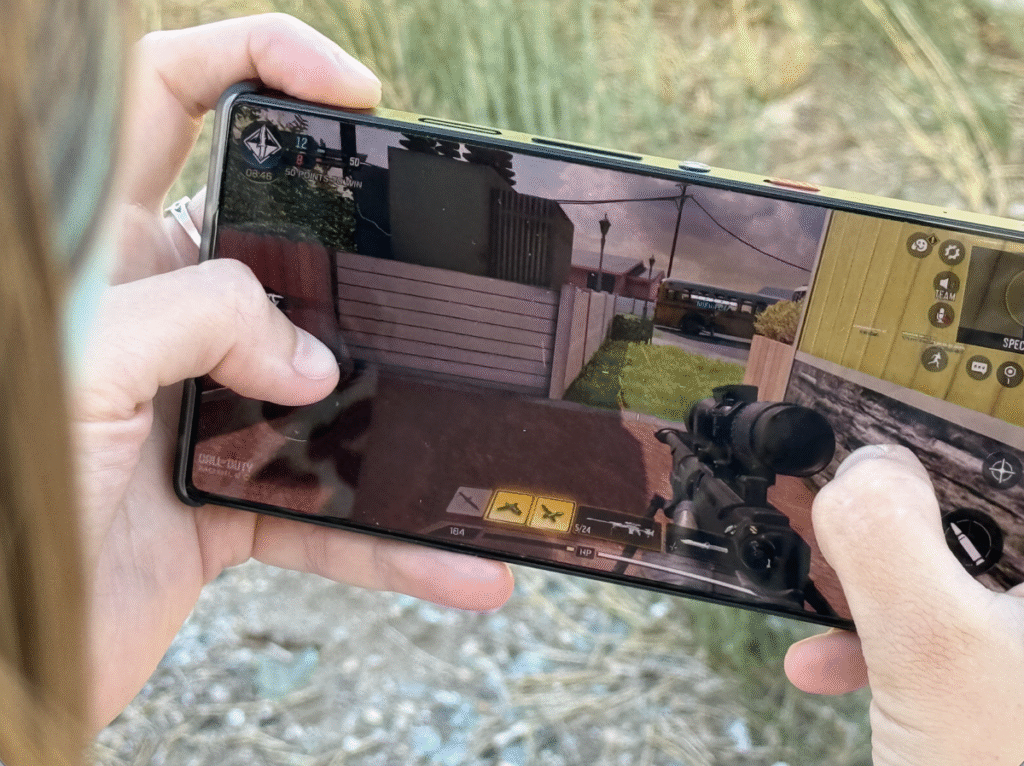
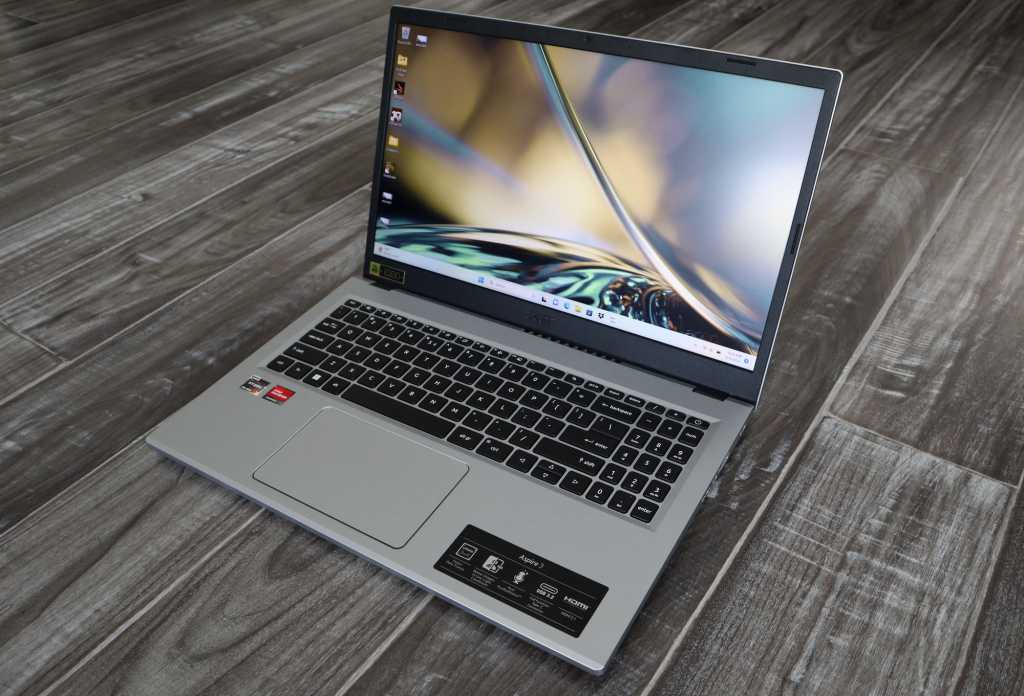
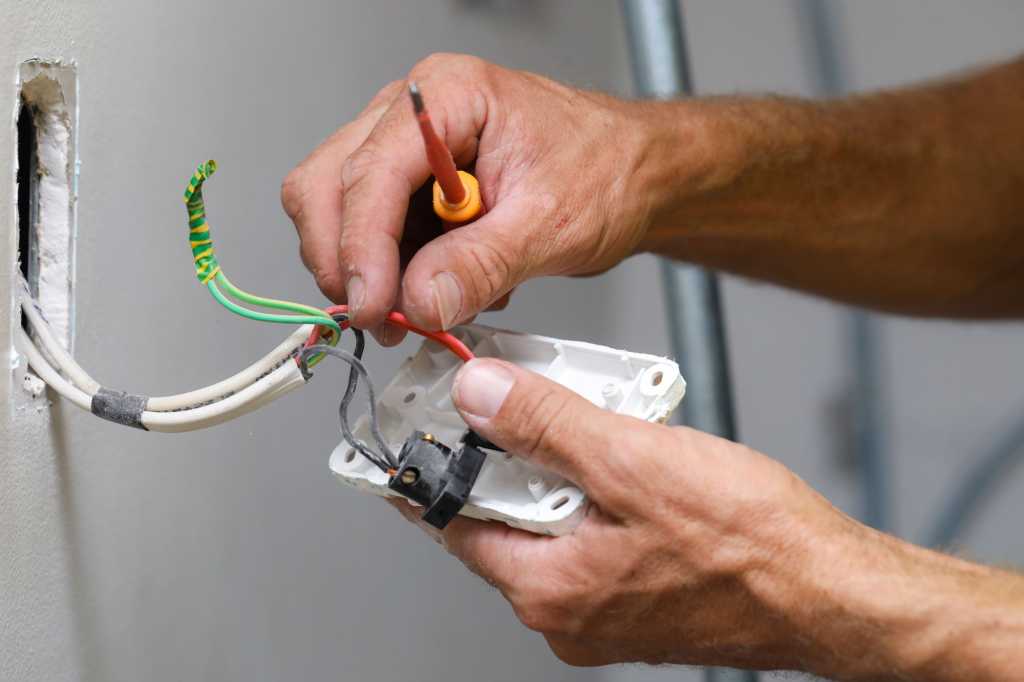
Responses